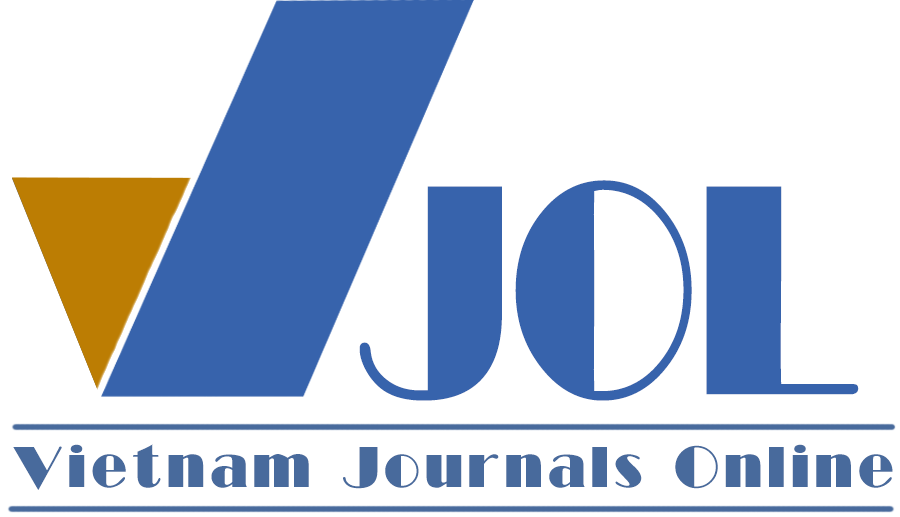The role of pay satisfaction in organizational commitment, job satisfaction and turnover intention: A case study of Hanoi’s grassroots health line
Authors
DOI: https://doi.org/10.57110/jebvn.v4i1.244Keywords:
Pay satisfaction, organizational commitment, job satisfaction, turnover intentionReferences
Allen, N. J., & Meyer, J. P. (1990). The measurement and antecedents of affective, continuance and normative commitment to the organization. Journal of Occupational Psychology, 63(1), 1-18. https://doi.org/10.1111/j.2044-8325.1990.tb00506.x
Brayfield, A. H., & Rothe, H. F. (1951). An index of job satisfaction. Journal of Applied Psychology, 35(5), 307-311. https://doi.org/10.1037/h0055617
Cohen, J. (2013). Statistical power analysis for the behavioral sciences. Routledge Academic.
Currall, S. C., Towler, A. J., Judge, T. A., & Kohn, L. (2005). Pay satisfaction and organizational outcomes. Personnel Psychology, 58(3), 613-640. https://doi.org/10.1111/j.1744-6570.2005.00245.x
DeConinck, J. B., & Stilwell, C. D. (2004). Incorporating organizational justice, role states, pay satisfaction and supervisor satisfaction in a model of turnover intentions. Journal of Business Research, 57(3), 225-231. https://doi.org/10.1016/S0148-2963(02)00289-8
Faridah, F., Gustini, G., Salehan, S., & Efendi, R. (2022). The turnover intention influenced by job satisfaction and organizational commitment. International Journal of Social Science Research and Review, 5(5), 334-340. https://doi.org/10.47814/ijssrr.v5i5.335
Garson, G. D. (2016). Partial least squares: Regression and structural equation models. Statistical Associates Publishers.
Gebregziabher, D., Berhanie, E., Berihu, H., Belstie, A., & Teklay, G. (2020). The relationship between job satisfaction and turnover intention among nurses in Axum comprehensive and specialized hospital Tigray, Ethiopia. BMC Nursing, 19(79), 1-8. https://doi.org/10.1186/s12912-020-00468-0
Hair, J. F., Black, W. C., Babin, B. J., & Anderson, R. E. (2010). Multivariate data analysis (7th ed.). Pearson.
Hair, J. F., Risher, J. J., Sarstedt, M., & Ringle, C. M. (2019). When to use and how to report the results of PLS-SEM. European Business Review, 31(1), 2-24. https://doi.org/10.1108/EBR-11-2018-0203
Heneman, H. G., & Schwab, D. P. (1985). Pay satisfaction: Its multidimensional nature and measurement. International Journal of Psychology, 20(2), 129-141. https://doi.org/10.1080/00207598508247727
Henseler, J., Ringle, C., & Sinkovics, R. (2009). The use of partial least squares path modeling in international marketing. Advances in International Marketing, 20, 277-319. https://doi.org/10.1108/S1474-7979(2009)0000020014
Hoppock, R. (1935). Job satisfaction. Harper.
Hu, G. (2022). The relationship between pay satisfaction and turnover intention of employees in mobile application development companies in Beijing, China. Science, Technology, and Social Sciences Procedia, 2022(5), 1-9.
Huynh, D. L. T., & Luu, T. T. T. (2018). Some effects of payment factor on career satisfaction and loyalty of bank employees: A research implemented in different banks in An Giang and Kien Giang province. An Giang University Journal of Science, 19(1), 76-89.
Kanter, R. M. (1968). Commitment and social organization: A study of commitment mechanisms in utopian communities. American Sociological Review, 33(4), 499-517. https://doi.org/10.2307/2092438
Luna-Arocas, R., Danvila-Del Valle, I., & Lara, F. J. (2020). Talent management and organizational commitment: The partial mediating role of pay satisfaction. Employee Relations, 42(4), 863-881. https://doi.org/10.1108/ER-11-2019-0429
Memon, M. A., Salleh, R., & Baharom, M. N. R. (2017). The mediating role of work engagement between pay satisfaction and turnover intention. International Journal of Economics, Management and Accounting, 25(1), 43-69.
Meyer, J. P., Allen, N. J., & Smith, C. A. (1993). Commitment to organizations and occupations: Extension and test of a three-component conceptualization. Journal of Applied Psychology, 78(4), 538-551. https://doi.org/10.1037/0021-9010.78.4.538
Nguyen, D. N., & Uong, T. N. L. (2022). The impact of HRM practices on organizational commitment and job satisfaction of civil servants in Hanoi. Journal of International Economics and Management, 22(1), 61-77. https://doi.org/10.38203/jiem.022.1.0042
Nguyen, H. K. (2020). Corporate social responsibility and turnover intention: Testing the direct and indirect effects in a Vietnam context. Ho Chi Minh City Open University Journal of Science, 15(3), 155-166. https://doi.org/10.46223/HCMCOUJS.econ.vi.15.3.1338.2020
Rizqi, N. A., & Ridwan, S. (2015). The effects of pay satisfaction and affective commitment on turnover intention. International Journal of Research Studies in Psychology, 4(2), 57-70. https://doi.org/10.5861/ijrsp.2015.1055
Serreqi, M. (2020). Relationship of pay and job satisfaction. European Journal of Marketing and Economics, 3(2), 124-131. https://doi.org/10.26417/260rmv74l
Singh, P., & Loncar, N. (2010). Pay satisfaction, job satisfaction and turnover intent. Relations Industrielles/Industrial Relations, 65(3), 470-490. https://doi.org/10.2307/23078304
Skalli, A., Theodossiou, I., & Vasileiou, E. (2008). Jobs as Lancaster goods: Facets of job satisfaction and overall job satisfaction. The Journal of Socio-Economics, 37(5), 1906-1920. https://doi.org/10.1016/j.socec.2008.04.003
Slatten, T. (2008). Antecedents and effects of emotional satisfaction on employee-perceived service quality. Journal of Service Theory and Practice, 18(4), 370-386. https://doi.org/10.1108/09604520810885617
Su’un, S., Rahim, S., Nurwanah, A., Junaidi, J., & Putra, R. A. (2023). The role of love of money on employees’ organizational commitment: Do ethics and pay satisfaction matter? Management and Accounting Review, 22(2), 205-228.
Tnay, E., Othman, A. E. A., Siong, H. C., & Lim, S. L. O. (2013). The influences of job satisfaction and organizational commitment on turnover intention. Procedia - Social and Behavioral Sciences, 97, 201-208. https://doi.org/10.1016/j.sbspro.2013.10.223
Tran, K. D., & Nguyen, D. T. V. (2012). Measuring pay satisfaction. Journal of Economic Development, 260, 18-24.
Vandenberg, R. J., & Nelson, J. B. (1999). Disaggregating the motives underlying turnover intentions: When do intentions predict turnover behavior? Human Relations, 52(10), 1313-1336. https://doi.org/10.1023/A:1016964515185
Vandenberghe, C., & Tremblay, M. (2008). The role of pay satisfaction and organizational commitment in turnover intentions: A two-sample study. Journal of Business and Psychology, 22(3), 275-286. https://doi.org/10.1007/s10869-008-9063-3
Downloads
Downloads
Published
Abstract View
PDF Downloaded
How to Cite
Issue
Section
License
Copyright (c) 2024 Nguyễn Danh Nam

This work is licensed under a Creative Commons Attribution-NonCommercial 4.0 International License.
by VNU Journal of Economics and Business
Most read articles by the same author(s)
- Nguyen Danh Nam, Uong Thi Ngoc Lan, Factors affecting core health workforce retention at medical centers under the Hanoi Department of Health , VNU JOURNAL OF ECONOMICS AND BUSINESS: Vol. 3 No. 1






